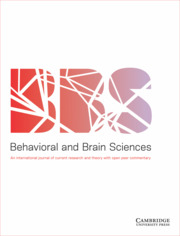No CrossRef data available.
Article contents
With either separate or integrated arrays of senses,perception may not be direct
Published online by Cambridge University Press: 30 October 2001
Abstract
The information required for perception may be available in theenergy arrays that stimulate sensory organs but in a form notdirectly suitable for the planning and execution of the organism'sactions in the environment. The requisite form of information isobtained, with no loss of adequate perception, by representation ofsensory stimuli in frames of reference determined by internalcontrol signals producing actions. This process seems evolutionarilyadvantageous but makes perception essentially non-direct, regardlessof the degree of intra- or inter-modal sensory integration.
Information
- Type
- Brief Report
- Information
- Copyright
- © 2001 Cambridge University Press

